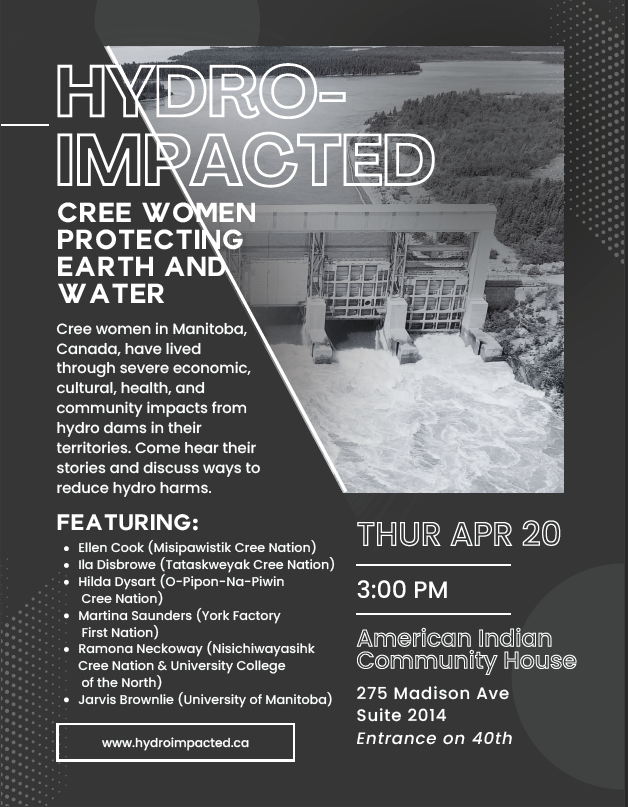[wr_vc_section_title title=”Acimotan: Storying the Gendered Impacts of Hydro” text_align=”center”]
The goal of this project is to support hydro-affected Indigenous communities to work towards a better future in which hydro does less harm and community members have greater well-being, more opportunities, and better lives overall. The project was developed and designed by researchers Ramona Neckoway and Jarvis Brownlie in collaboration with a Steering Committee of hydro-affected community members. The Steering Committee has direct control and input; its members helped develop the ideas, approved the initial plans, and will continue to guide the project throughout its lifetime. We are bringing community members together for discussions and actions that will contribute to healing past harms and ensuring a better future.
RIGHT NOW we’re in New York City attending the United Nations Permanent Forum on Indigenous Issues. You can follow us on Tik Tok at https://www.tiktok.com/@hydroimpacted

Check out our presentation, Hydro-impacted Cree Women Protecting Earth and Water
Cree women in Manitoba, Canada, have lived through severe economic, cultural, health, and community impacts from hydro dams in their territories. Speaking to current environmental and socioeconomic issues, and seeking to discuss ideas for mobilization and actions with participants from elsewhere, community delegates will discuss ways to increase wellbeing in their communities and territories today.
Gendered Impacts
By “gendered impacts” we mean essentially two things: first, that the experiences of women, two-spirit people, and gender-diverse people have received less attention and deserve to be expressed; and second, that hydro impacts vary to some extent according to people’s gender, so our research will identify and discuss those differences. In other words, while this project’s focus will be primarily on the experiences of women, two-spirit people, and gender-diverse people, we do not mean to exclude men and boys from the project entirely.
Project Components include: